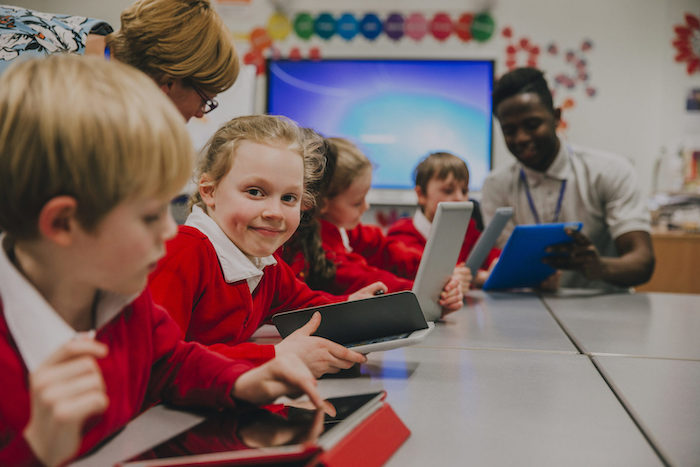Teaching in the Future
For over two hundred years, teaching and learning within schools has barely changed. Classrooms all over the world are arranged according to the same traditional pattern. The teacher stands at the front of the class next to the board and faces rows of students at desks with books. Over the last two centuries, there has been very little change in the way that subjects are taught and in how students are expected to learn. Children still raise their hand to answer questions or to ask questions. Children are still tested and assessed in much the same way as they were 50 years ago.
According to recent research by TALIS, however, change is around the corner. This change is being driven by digital learning.

What is TALIS?
The Teaching And Learning International Survey (TALIS) is a comprehensive evaluation of the conditions of teaching and learning. It was first performed in 2008, and it is conducted worldwide. It is coordinated by the Organisation for Economic Co-operation and Development (OECD), with a view to improving educational policies and outcomes. Their goal is to shape policies that foster prosperity, equality, opportunity and well-being among students and teachers all over the world. Their extensive report provides a barometer for the teaching profession every five years. Their findings are integrated into Studycat products.
How does TALIS see education changing?
The recent TALIS 2018 report surveyed teachers and school leaders globally to better understand current working conditions and school environments.
It highlights some interesting facts about current teaching practices and policies, shaped by educational, political and socio-economic factors which will have a huge bearing on teaching and learning for the future. This information gives us a good viewpoint on emerging trends. It shows how education is gathering pace towards a digitally-integrated future with connected learning in the home.
Here is what TALIS has taught us about teaching over the last five years:
- Experienced teachers have more time to spend on teaching and learning activities. Teachers over 30 years of age have on average an extra five-minutes more of teaching time per 60 minute class.
- Less experienced teachers are often given teaching roles in more challenging classroom environments.
- Younger teachers spend more time trying to keep order in the classroom.
- Teachers in larger classes feel that they waste time in taking the register, controlling the class and handing out forms.
- Many teachers and school leaders have competing tasks. Knowing how to prioritize takes time and experience.
- The two most time consuming jobs are lesson planning and preparation.
- Planning time has decreased thanks to the integration of computers, digital devices and social media into the lesson.
- Educators are ready for new ideas and technology. 79% of teachers said they were open to innovation.
The Future of Learning and Teaching: How can schools innovate?
Rapid social, economic and technological changes have led to calls for innovation in the classroom.The International Summit for the Teaching Profession held in Helsinki in March 2019 highlighted the following four key areas that educational reform should address in the coming years:
- Improve learning outcomes and the quality of education.
- Enhance equity in access to and the use of education.
- Improve efficiency, minimize costs and get high value for money invested.
- Create a curriculum capable of adapting to rapid changes in society.
What is innovation in education?
Innovation in education is perceived to be the general uptake of innovative practices by teachers as core actors in the educational process. This includes things such as blended learning, flipped classrooms, gamification, digital learning, experiential learning, embodied learning, and connected learning.
Studycat co-founder Mark Pemberton was recently invited to speak at an Edtech summit in Singapore and made these comments about the future of children’s educational products:
“A lot of the speakers at the event were focusing on the need for increased parental involvement in students’ learning journey, especially for young learners. This puts a lot of pressure on time-poor teachers to communicate in ever-increasing detail. Only tech can solve this.
Digital education with inbuilt reporting via teacher/parent dashboards will become increasingly important in tomorrow’s education. At Studycat we believe in connected learning. When student learning is at the centre with parents and teachers supporting, kids get the best results in school. There will be a move towards quality education services that deliver immersive learning experiences for children that bridge both home and school.”
Studycat co-founder Jason Bakkum had this to say about his experience using Studycat apps in the classroom:
“Having introduced elementary students of all ages to Studycat apps as part of their English classes, I’ve observed first hand what an incredible motivator access to such entertaining technology can be, especially for behavior and classroom management.
I’ve also seen what a great equalizer our technology is. It allows introverted students or those who are not otherwise at an advantage in a traditional language class to blossom on their own, raising the overall level of the class.”


